Frogs have a fascinating life cycle, which is often taught to children as it is easy to observe in the wild. Their life cycle is also important for scientists to understand, as knowing more about how they reproduce can help us protect vulnerable species by providing the conditions they need to survive.
Life Cycle of Frogs
The Metamorphosis Process
Frogs go through a process of metamorphosis. Metamorphosis is commonly associated with butterflies, as they transform from caterpillars into their adult form, but amphibians like frogs also go through this process. During their various stages they turn from eggs to tadpoles, to adult frogs.
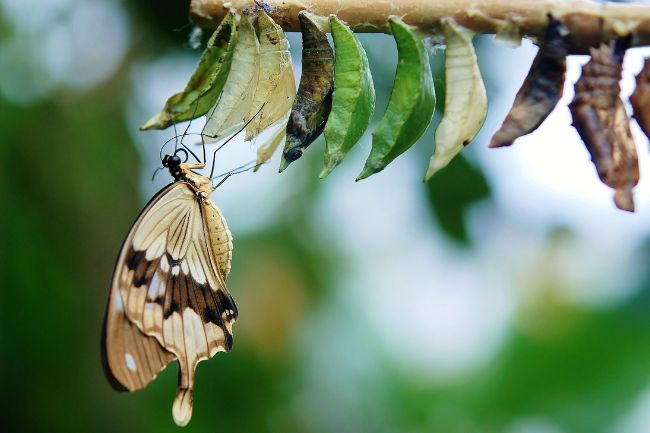
Also read: What Caterpillars Turn Into Butterflies? (Species Explained)
Life Stages of Frogs
Frogs go through a number of different life stages. Not all frogs follow exactly the same stages, with there being a variety of different life cycles practiced by species across the world. The most common cycle is for the female to lay eggs during copulation with the male. Grasping onto the female’s back, the male will release his sperm at the same time as the eggs are layed, fertilising them.
After the eggs are laid most frog parents have nothing more to do with their young. Eggs are usually laid into bodies of water, such as ponds, puddles, lakes or rivers. How quickly they develop into tadpoles depends on the species, however, in time they hatch out. Unlike the adults, tadpoles don’t have any limbs, just a long tail.
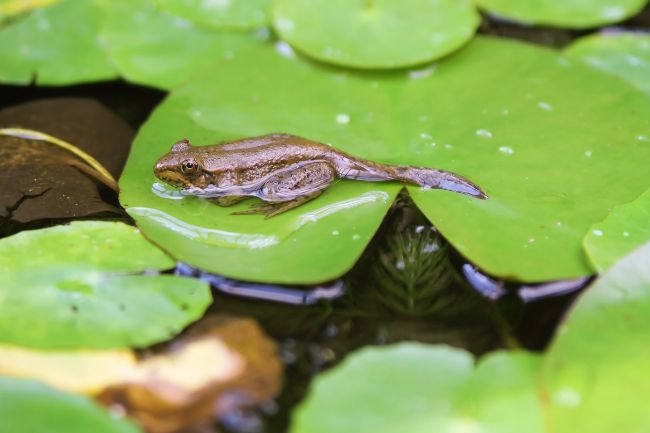
Living in the water, the tadpoles slowly develop, at first gaining back legs, then front legs, and their bodies slowly developing to reabsorb their tail. Their internal organs also change, their lungs growing to allow them to breathe air.
Once the tadpoles have become fully formed froglets they can choose the leave the water. Over time these tiny frogs will feed and grow, eventually becoming adults, and returning to the water to mate once more.
Factors that Influence the Life Cycle
A frog’s life cycle can vary greatly across species. While most frogs are tadpoles before they become froglets, some species hatch straight out as froglets. Most adult frogs also choose to lay their eggs straight into the water, however, this can increase the risk of predation, therefore some species lay eggs on leaf surfaces above waterbodies, or in dry ground. Some even use their own bodies to hatch the eggs, carrying them in their mouths or on their backs.
Mating Behavior of Frogs
Courtship Behaviour
Courtship behaviour is well documented in frogs, and one that most people will have experienced at some point. The gentle ribbit of a frog on a summer’s evening is in fact a male frog calling a female to him. In many species the depth of the sound helps inform the female of the male’s size and strength. The bigger and strong the frog, the more suitable his genes will be to father strong children.
In many species, male frogs will gather together at suitable mating locations to croak collectively. This behaviour is beneficial to the males as more females will be drawn in to the gathering. Some females may also ribbit, however, their calls are often quieter.
In some species the male will also change colour, such as the moor frog whose male turns blue. This may help avoid confusion, as in species where males and females look similar, males can end up attempting to mate with other males.

Amplexus
Amplexus is the name given to the courtship position of frogs during mating. In order to guard the female prior to her laying her eggs, the usually smaller male, will wrap his legs around her body, and hold on tight. Once she starts to release her eggs he’s then in a prime position to fertilse them. Males will often fight over females, trying to force other males from their spot, or even climbing on top.
Fertilization
In frogs fertilization occurs externally. The females release eggs, and the males release sperm. Fertilisation is most certain if the two are closely joined together.
Egg Development
In order for the eggs to fully develop it’s important that they remain wet. The majority of frogs do this by laying them into water, however, some species will carry their eggs in or on their bodies, while others lay them within foam, or keep them wet by reapplying water.
Most frog species abandon the eggs after they are laid, but in some species the males will remain to protect the eggs from predators. Most of these more parental species will simply guard the eggs, however, some species will even carry the eggs with them in an attempt to keep them safe.
Tadpole Development
Tadpoles have a significantly different diet from their adult selves. Most tadpoles are herbivores or detritivores, meaning they feed on algae, decomposing plants, or waste such as fish droppings at the bottom of the pool. Adult frogs are almost exclusively carnivores, eating fish, insects, and even small mammals.
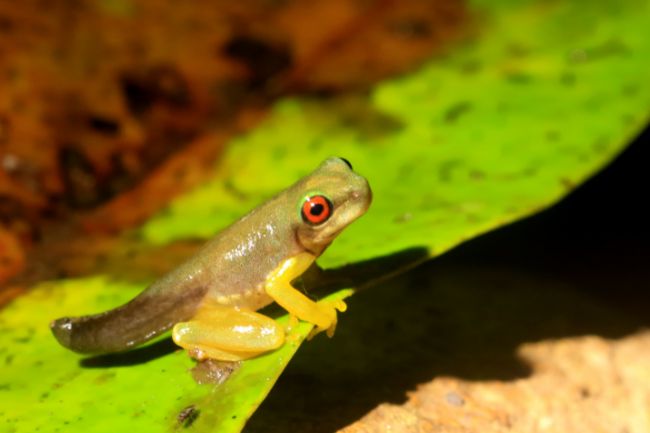
Also read: Frogs in a Pond: What Do They Eat?
Reproduction Strategies
Breeding Strategies
Frogs can use a number of different breeding strategies to try and ensure their progeny get the best start in life.
- Prolonged breeders
The majority of frogs are what is known as prolonged breeders. This means they breed at regular intervals every year. - Explosive breeders
Explosive breeders are common to dry areas, where conditions aren’t always suitable for breeding. Once the conditions become suitable, such as after heavy rain, they will breed in large numbers and try to produce as many young as possible. The conditions that allow the young to survive may not last very long.
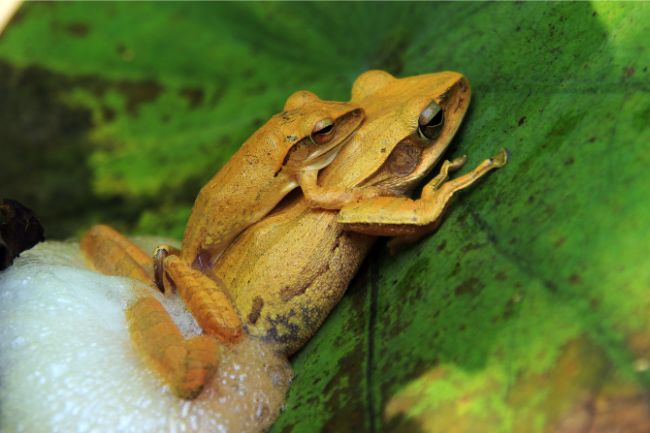
Environmental Cues
Frogs, like many animals, will use a variety of environmental cues to tell them that it is time to breed.
- Temperature
Many frogs in temperate regions become dormant during the winter, and will therefore mate and lay their eggs in the spring, so their young have the maximum amount of time to develop before the winter. Rising temperatures can tell them it is time to emerge from hibernation. - Rainfall
The presence of water is key for many species when it comes to reproduction. While some may use permanent water bodies to lay their eggs in, others will use temporary pools, such as puddles or temporary ponds. The arrival of rain is particularly key for species that live in more arid regions. - Photoperiod
Many animals in temperate regions use daylight, and the changing length of the day, to know when the seasons are changing, and it’s time for them to become active.
Threats to Frog Reproduction
Habitat Loss and Degradation
Around a third of frog species are at risk of going extinct. A huge part of this is down to a loss of habitat. In order to reproduce frogs need clean pools and other water bodies, however when natural habitats are cleared for farming or urban development, they are often drained. Not only does this remove important breeding habitats, it also reduces the amount of food and shelter available siginificantly, meaning less adults survive to be able to mate.
Pollution
Frogs, like all amphibians, have very thin skin. This is essential to allow them to breathe underwater and drink through their skin, however, it also means it is very easy for pollutants to enter their blood stream. When water bodies become polluted whole populations can be killed off. Some pollutants, while not killing the frogs, can also lead to them becoming weaker, and more susceptible to disease.
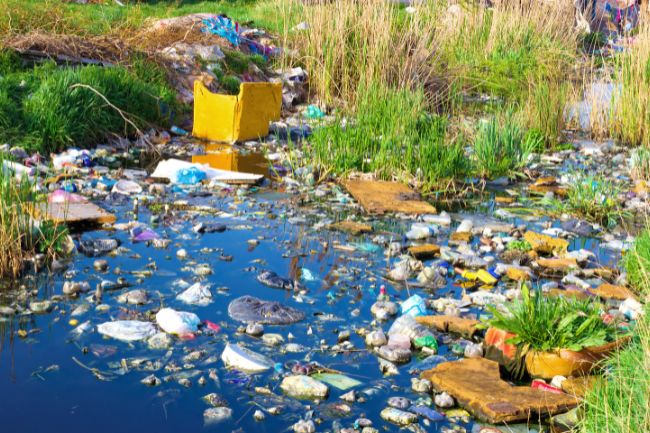
Climate Change
Climate change is a threat to many of the frog species around the globe. For example, many rare species of frogs live at high altitudes. As the climate changes, the conditions for these species can shift to being higher up the mountains. In many cases the correct conditions can be lost entirely as the frogs run out of space.
As water is essential for many species, climate change is also a threat in that it changes when rain appears, and how long droughts last. Pools that were previously never dry, may now dry up in hotter periods, leaving eggs high and dry.
Invasive Species
Invasive species can threaten frogs either by outcompeting them for the same resources, or by predating them, causing their numbers to decline. One common problem is non-native fish being introduced to pools, which were previously fish-free. Once there the fish will eat any available eggs.
Conclusion
All frogs start their lives as eggs, which in time develop either into a tadpole or a froglet. In time tadpoles too become froglets and can head out into the world to become adults.
While frogs are found across the world, they are also extremely vulnerable to changes in their environment, and to pollution and climate change. By protecting their natural habitats, or creating new ones, and preventing the pollution of the environment, we can protect these species from being lost.

